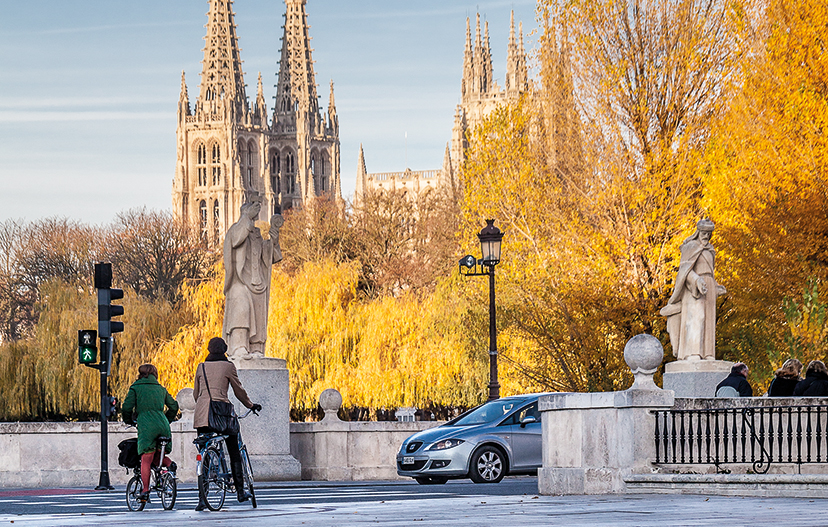En Burgos sigue latiendo con intensidad el pulso de El Cid Campeador, el personaje más famoso de toda su historia. La ciudad está repleta de hitos cidianos —recogidos en una señalizada ruta— que recuerdan la presencia, legendaria o real, de Rodrigo Díaz de Vivar. Entre todos destacan el Solar del Cid, la iglesia de Santa Águeda, la Catedral —en la que están enterrados sus restos y se conservan su famoso cofre y la carta de arras de su matrimonio con doña Jimena—, el arco de Santa María, el monumento sobre la glera del Arlanzón, el puente de San Pablo y la estatua ecuestre que preside la plaza del Cid. Cruzando el mencionado puente es sencillo llegar hasta el interesantísimo Museo de Burgos, donde se guarda la mítica y cidiana espada Tizona.
No muy lejos quedan Vivar del Cid y el monasterio de San Pedro de Cardeña. En este último la huella cidiana se puede rastrear en la llamada torre de doña Jimena, en el supuesto enterramiento de Babieca —el más famoso caballo del Campeador— y en la capilla barroca que alojó, hasta su traslado a Burgos en el siglo XIX, los restos mortales del héroe.
In the footsteps of El Cid
In Burgos the pulse of El Cid, the most famous individual in its entire history, continues to beat intensely. The city is full of landmarks – brought together in a sign-posted route – that remember the presence, legendary or real, of the nobleman born Rodrigo Díaz de Vivar. Highlights include the Solar del Cid (his reputed house), the Iglesia de Santa Águeda, the Cathedral – where his remains are buried and his famous travel chest and the pledge letter of his marriage to Doña Jimena Díaz are preserved – the Arch of Santa María, the monument overlooking the shores of the Arlanzón, the San Pablo bridge and the equestrian statue dominating the Plaza del Cid. Crossing the aforementioned bridge is an easy way to the fascinating Museo de Burgos, where El Cid’s mythical sword ‘Tizona’ is kept.
Close by lie the village of Vivar del Cid and Abbey of San Pedro de Cardeña. In the latter, El Cid’s footprint can be traced to the tower known as Torre Doña Jimena, the supposed burial site of his most famous horse Babieca and the Baroque chapel that contained, until their transfer to Burgos in the 1800s, the Spanish hero’s mortal remains.

